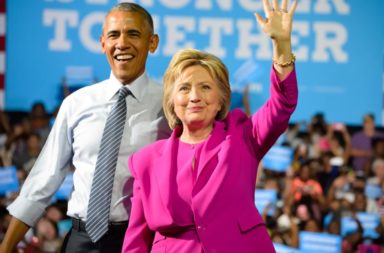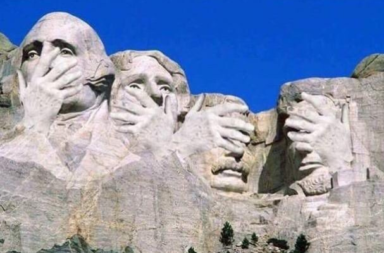As the beginning of the 2016 Democratic primary season approaches the gap between the two potential presidential nominees, Hillary Clinton and Bernie Sanders, is closing. Since announcing her intentions to run, Clinton has maintained a solid 20 point lead on Sanders. However, in the final run-up to the Iowa and New Hampshire primary elections (which are, arguably, the most important in the nominee process) Sanders is beginning to chip away at opponent Hilary Clinton’s grip on the poll numbers, and is currently up 2 points in the Iowa caucus and a staggering 14 points in the New Hampshire primary.
What are the Iowa caucus and the New Hampshire primary—and why are they so important?
The election primaries are polls occur in a series and generally begin in early February and end in the month of June. The primaries are an indirect form of representation, in that they only decide the number of delegates that each state will send to each party’s National Convention. The delegates gathered at the convention are the ones who will ultimately decide which candidate receives the party’s official nomination for the presidency.
Traditionally, Iowa and New Hampshire are the first two nominating events. An earlier primary typically means that the decision of that state’s voters will hold more sway in the outcome of the nomination process, as they are more likely to influence both the opinions of the media and can either give greater credibility to a weak candidate or increase skepticism of a strong candidate. This year the Democratic primaries will be held on February 1st in Iowa and February 9th in New Hampshire, making them the most influential states in setting the tone for later primaries.
What explains Sander’s recent surge among Democrat voters?
In the past weeks Bernie Sanders has seen a massive surge in this polling numbers in both the Iowa and New Hampshire polls, leading Clinton by 2 points in the Iowa caucus and a staggering 14 points in the New Hampshire primary. Supporters of the Sanders’ campaign are now pointing to these numbers to show that public opinion is shifting in favor of their candidate as his message of economic inequality and runaway corporate greed beings to resonate with larger swaths of the electorate. Surely, this uptick in favorable numbers represents a massive change in the direction of the election.
Well—yes and no.
Polls are unreliable
To state the obvious—election polls are poor predictors of election outcomes and incredibly unreliable this far from the actual election. While Sanders’ gains in the polls are significant in their own right, they can’t be said represent a definitive swing in any direction. Clinton still holds a significant lead in national polling numbers.
However, the importance of the Iowa and New Hampshire primaries cannot be denied. Many presidential hopefuls, who were previously considered underdogs or who were seen as losing ground, have been able to shift the tone of elections after a successful showing in these two states. If Sanders were able to pull off a majority vote in both the Iowa and New Hampshire primary elections, the Clinton campaign would have no choice but to go on the offensive.
Polling numbers just get closer as the elections approach
Elections generally get closer as election season approaches. In the US the election season is long and they only seem to begin earlier and earlier each cycle which leads to voters simply ignoring the majority of the political posturing until elections get closer. Part of Sanders’ recent surge could simply be explained as voters are finally starting to pay attention. Elections are rarely, if ever, static and the presidential primary is unlikely to be the exception. Poll numbers change rapidly and changes in who leads the polls are generally expected to happen.
Democrats are ready to ‘#FeelTheBern”
Bernie Sanders is campaigning on a platform of more equitable economic and social policies, rolling-back corporate welfare protections, and tightening environmental protections. This has given him a solid lead on young voters with 65% supporting him compared to Clinton’s 27%. Surprisingly enough, he also leads among White voters with 46% of that voting bloc. Perhaps, Democrats really are ready for a shift further left along the political spectrum.
To be sure, it is most likely a mix of all of these factors (plus a few others) that explain Bernie Sanders’ recent surge in the polls. Sanders’ message does capture a certain portion of Democratic who’ve become disillusioned with the party establishment and primary numbers do tend to get tighter as elections approach. However, at noted earlier, this could simply be smoke and mirrors from bad poll predictions, in which case—all bets are off and things are going to get much more interesting.




